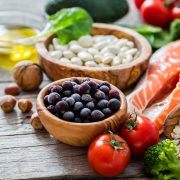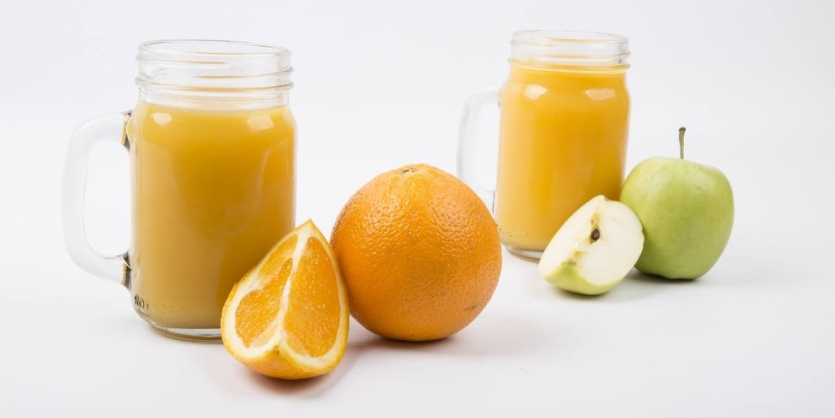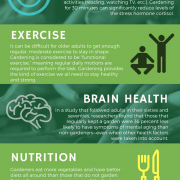You don’t have to memorize the nutrient content of all your foods. You can thank nutrition facts labels for that. It isn’t necessary to recall the sodium content of your breakfast cereal off the top of your head every time you shop. But getting the most information from reading nutrition facts labels can be tough, too.
Here’s six tips for pulling out the facts that matter most to you:
Start with the Serving Size
Every number on that nutrition facts label means nothing without some context. The serving size provides the context you need.
All the amounts that follow are based on that servings size. Sometimes the whole package of food is a serving, but that’s not always the case. That’s why you have to be careful.
Relying on the label’s serving size is a good idea because you can’t trust your judgment. It’s not an insult to you—in general, people are terrible at gauging serving sizes. Research indicates the average person’s estimations are off somewhere between 40-150 percent. So, you could be eating double the number of calories you think you are.
Please fight the urge to skip right to calories or fat content. Don’t start down the label without checking the serving size to put everything else in context.
Figure Out the Type of Fat
Reading nutrition facts is often a dive into the macronutrient content of the food. That’s a helpful way to break things down and give you the information you need. But the raw numbers might not be enough to make good decisions.
This is especially true with fats.
Paying attention to the type of fat and where that fat comes from can be more important than the total number. You want to avoid trans fats, but saturated fat can be more nuanced. That’s why you need to look at the ingredient deck to figure out if the source of fat is vegetable-based (usually healthier) or animal-based (usually unhealthier). Going the extra step will help you make the healthy determination.
Check the Sugar and Find the Fiber
Fats aren’t the only macronutrient that requires extra investigation. When you’re reading nutrition facts labels, look at carbohydrates, but also note the sugar and fiber amount.
Sugar is a simple carbohydrate. It has well-established ties to weight gain and can hide in foods that seem healthy. Just think about all the sugar that’s hidden in fruit juice. Checking the sugar content—especially added sugar—is important.
While you might avoid sugar, your diet can benefit from more fiber. These complex carbohydrates aid in healthy digestion and keep you feeling full for a longer time. And you only absorb about half of fiber’s calorie content. All these combined effects help fiber support your weight-maintenance efforts. Make sure to find the fiber when reading nutrition facts labels.
Pay Attention to Protein
Just because it’s the final macronutrient mentioned doesn’t mean protein you should ignore it when reading nutrition facts. Far from it. If you’re managing your weight or exercising, protein is key.
A lot of studies have shown dietary protein’s ability to support weight-management programs. An analysis of 51 studies found that a sufficient increase in protein—over 58 percent per day, on average—showed favorable weigh-management results.
A similar analysis showed that dietary protein increases showed favorable effects for muscle and strength during resistance training.
So, protein is a big plus for those focusing on diet and exercise. But it’s also important for general health. Dietary protein provides the essential amino acids your body needs to carry out its daily functions.
Don’t Miss the Micronutrients
The essential vitamins and minerals are listed on the label. This will help you see how much nourishment you’re actually getting from what you’re eating.
On most labels, you’ll also see a percentage of daily value. That number is based on recommended daily allowances, which are about avoiding deficiencies. It doesn’t consider optimal amounts needed to live your best life.
Sodium is one micronutrient you won’t find with the other vitamins and minerals. It’s typically listed with the macronutrients. And if you’re watching your sodium intake, check this important number.
Keep Your Health Goals in Mind
Every person is different. Everybody has different health goals. That makes each label look different to each individual.
You have to look at labels through the lens of your own health goals. When you do that, each number starts to take on new meaning. Here’s one example: if you’re managing your weight, a low-calorie count might be intriguing. But if you’re a body builder, high calories might be more important.
And don’t lose sight of the big picture. Put what you’re about to consume in the context of what you will or have eaten over the course of an entire day. Think of nutrition as a daily bank account. What have you put into your nutritional savings account and what will you be withdrawing?
Reading is Fundamental
Get in the habit of reading labels and learning about the nutritional composition of your food. Over time this becomes easier and eventually will become second nature. You’ll never have to memorize every detail. But at some point, you intuitively begin to know the nutrient content of the food choices in front of you. Educating yourself will help you reach for healthier alternatives to fuel your life.
This is all part of getting serious about your food. In coordination, you should write down your health goals. Then ask how you want food to fuel your life, and what ratios of macronutrients (carbs, proteins, and fats) make you feel the best and help you achieve the health you desire? After you have your health goals, utilize a nutrition facts panel to help you achieve them.
But, remember, there is still no substitute for eating as many fruits and vegetables as possible, exercising, choosing healthy sources of protein, and ensuring you get optimal amounts of all essential micro- and macro-nutrients your body needs for optimal health.
Check out this great resource for more tips on reading nutrition facts labels.







 That’s an old adage. But what does it really mean?
That’s an old adage. But what does it really mean?




